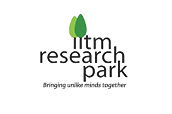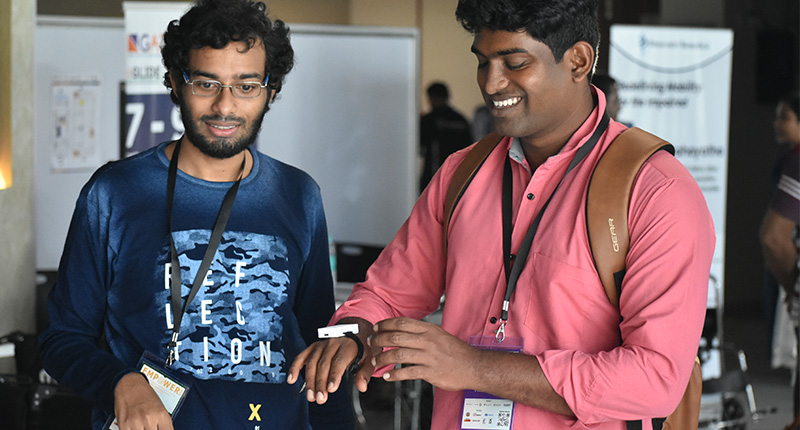The development of assistive devices can overcome visual, hearing, and locomotor impairments, enabling individuals to communicate, access information, and engage with the world more effectively. AI algorithms can personalize these devices to cater to individual preferences and needs, empowering users with a personalized and adaptive experience.
In recent years, technologies have matured to be able to create a whole range of simple and affordable assistive devices, to help people with disabilities and the Geriatric. Sensing technologies and signal processing technologies today enable the processing of voice, images, and video signals instantly. Coupled with artificial intelligence (AI), voice signals in virtually any language can now be converted to text, translated from one language to another and played out in another language. It is possible now to recognise sign language and convert it to text in any language; similarly, text in any language can now drive an Avatar to provide sign language.
Cameras can now take an image of any text and convert them to written text in any language, speak out in any language or render it in sign languages used in different parts of the world. It is now possible to come up with a whole range of innovative devices, which can be useful to overcome all kinds of visual and hearing impairments. In India, IIT Madras Research Park is at the forefront of developing speech and language technologies, including sign language, that can be applied to areas like transcription and translation for persons who are Deaf-and-Hard-of-Hearing as well as voice-based technologies for persons with vision impairment.
In a similar manner robotics and material technologies have advanced to the extent that inexpensive and innovative devices can be designed to overcome locomotor disabilities. AI can also be used to detect and help people with learning disabilities like dyslexia, dyscalculia and dysgraphia. By leveraging AI algorithms, personalized experiences can be created, adapting assistive devices to individual preferences and needs. The stage is therefore set to revolutionize accessibility and improve outcomes for individuals with disabilities and geriatrics.
The Need for Assistive Devices
India is home to a substantial population of over 70 million individuals with disabilities (source: World Bank). Globally, approximately 1 billion people, constituting around 15% of the world’s population, face similar challenges (source: World Health Organization). However, only 1 in 10 individuals who require assistive devices have access to them (source: World Health Organization). The situation is worse in developing countries. What is needed is a large effort to develop a whole range of Assistive Devices. It is important that such devices are useful and acceptable to users; it is equally important the devices are available at a price point that they can afford.
Revolutionizing Aging with Assistive Technology
Assistive technology (AT) is not only relevant for persons with disabilities but also holds significant importance for the geriatric population in India and worldwide. With the global population aging rapidly, AT plays a crucial role in addressing the challenges faced by older adults in maintaining independence and quality of life. By leveraging innovative solutions such as mobility aids, smart healthcare devices, and cognitive assistance tools, AT enables older adults to age in place, stay engaged, and ensure their well-being. In India, where the geriatric population is growing, the adoption of AT can greatly enhance the lives of older adults and alleviate the strain on healthcare systems.
Nurturing Young Talent: From Prototype to Commercialization
India’s huge population today peaks between the age of 15 to 30 years. The country graduates one million engineers a year. With a bit of training and strong dose of motivation, many of them can be very creative. Thus, there exists an extraordinary opportunity to nurture and harness this young talent to develop innovative low-cost assistive technology solutions. Well-organised Hackathons, innovation challenges, and mentorship programs provide platforms for youth to showcase their skills and create impactful solutions. Collaboration among academic institutions, industry experts, and non-profit organizations fosters an innovation ecosystem for assistive technology development.
Successful assistive technology must go beyond prototypes. Commercialization alone would ensure widespread availability and affordability. Indian youth can utilize their entrepreneurial spirit to establish start-ups and social enterprises focused on manufacturing and distributing assistive technology. Access to funding, incubators, and supportive policies enables these ventures to scale globally.
Commercialization for Global Impact
Developing and commercializing assistive technology presents unique challenges compared to mainstream technologies. The market size for assistive devices is relatively smaller if one confines its usage to people with disabilities, making it less attractive for traditional investors. But once the device is designed to serve people with disability and the geriatric population, substantial markets exist. One would have to find innovative ways for customization and personalization required for individual needs, to handle the increased complexity and yet not substantially increase cost.
One must always remember that the impact of assistive technology can extend far beyond its borders. By commercializing these innovations, India can become a global leader in the field, exporting affordable and accessible assistive devices to countries around the world. This not only benefits individuals with disabilities but also contributes to India’s economic growth and global reputation as a technology hub.
Conclusion
In conclusion, India stands at the precipice of a tremendous opportunity to leverage its vast talent pool and technological capabilities to develop and commercialize assistive technology solutions for global accessibility. What is needed is a Will. IITM Research Park (IITMRP) is determined to make India a leader in AT over the next decade, towards this, it would like to see 50,000 young engineers working in India in this area over the next decade. Such large numbers are possible, because India not only has a large number of talented youngsters, but their cost is low. No other country in the world fulfils both these criteria. It is therefore India’s opportunity to harness or lose.
Publication: PCQuest
Read more by clicking on the link to the featured article below:
![]()


